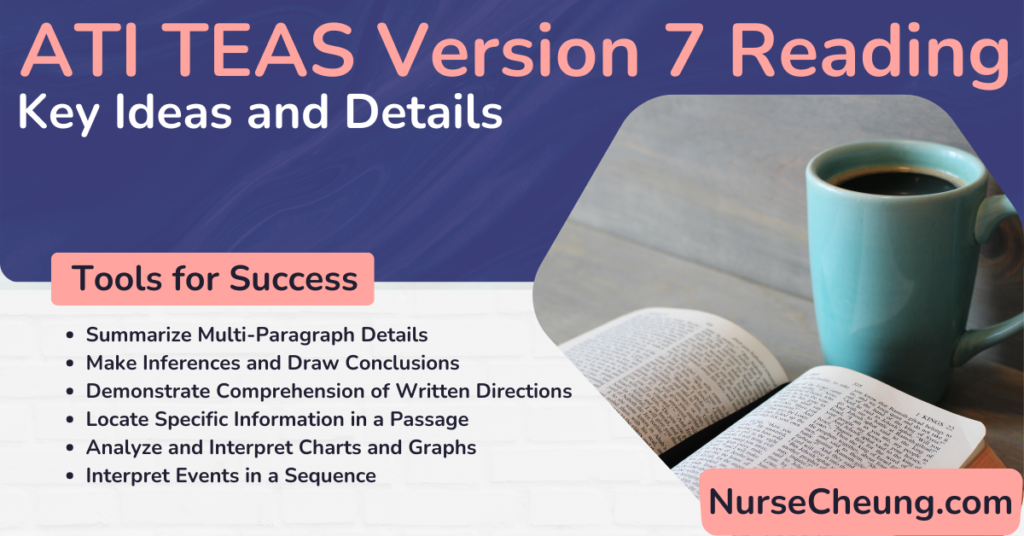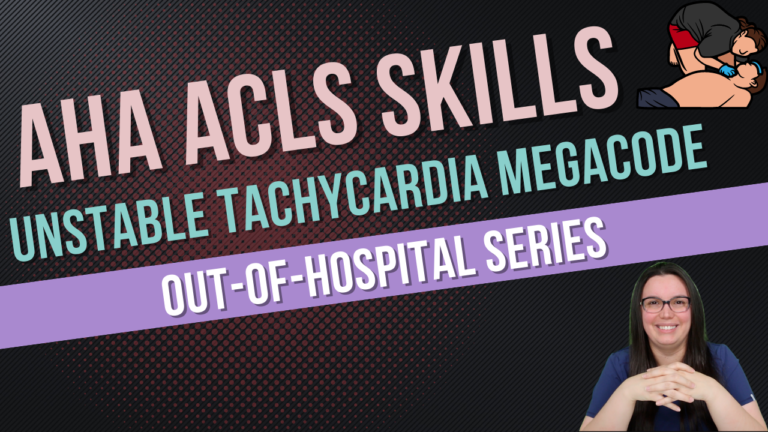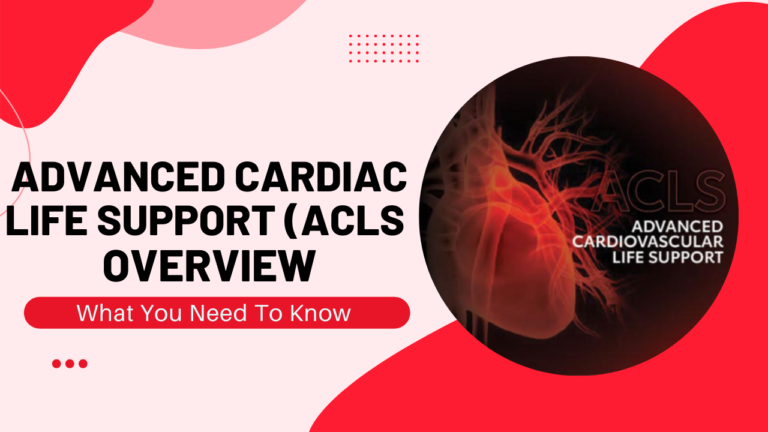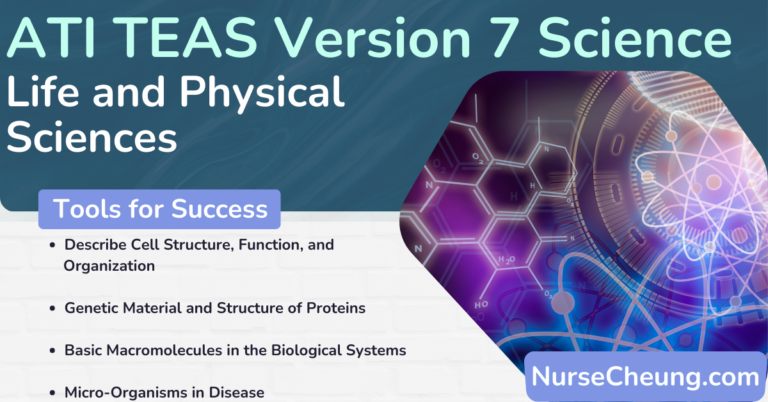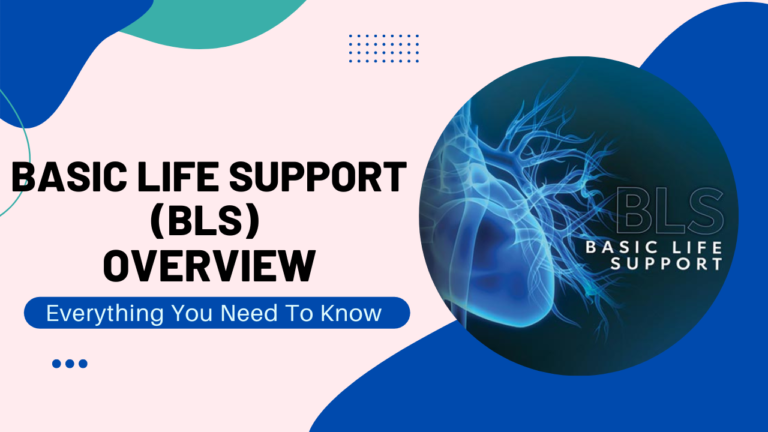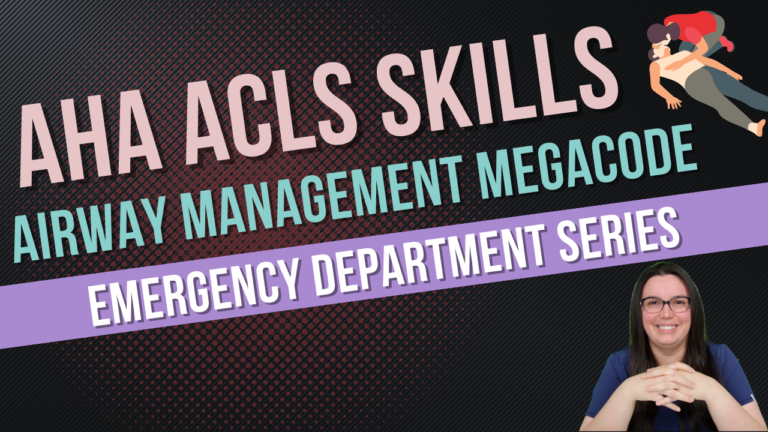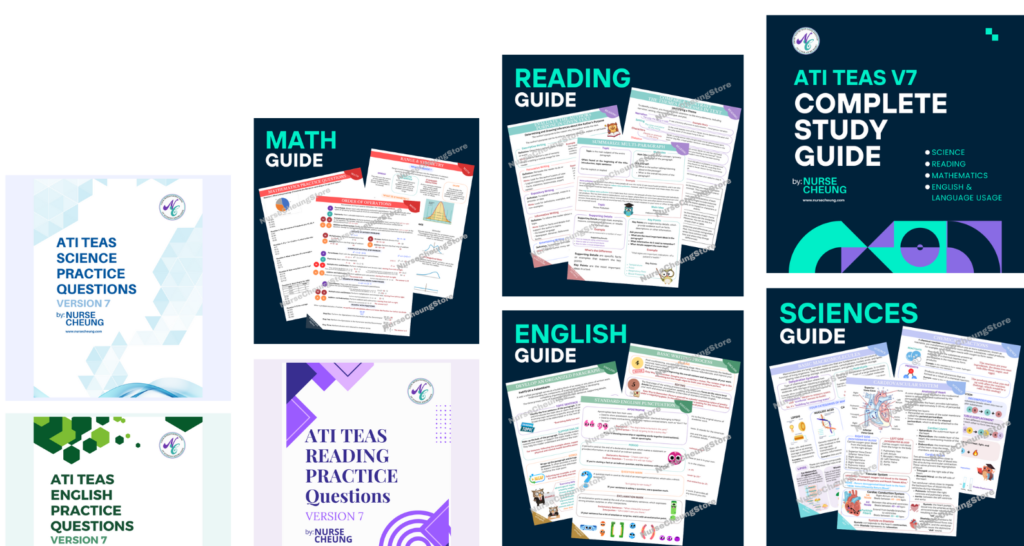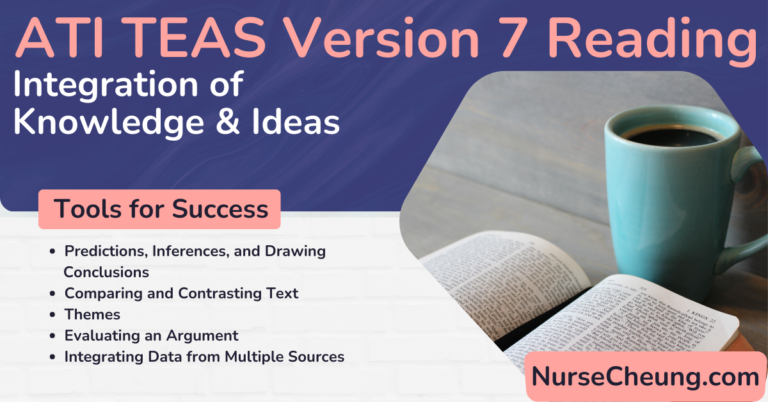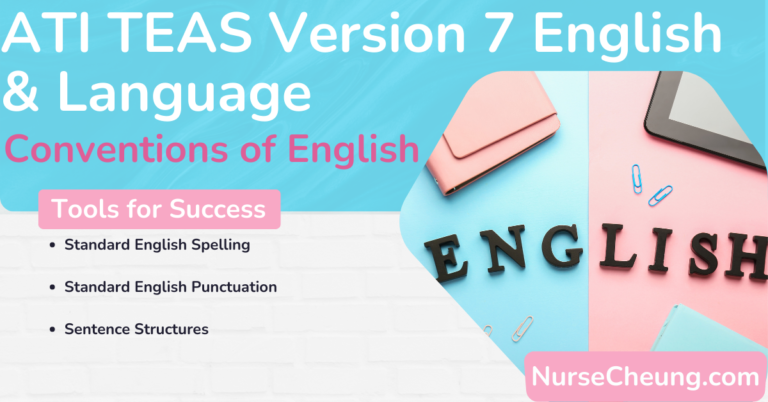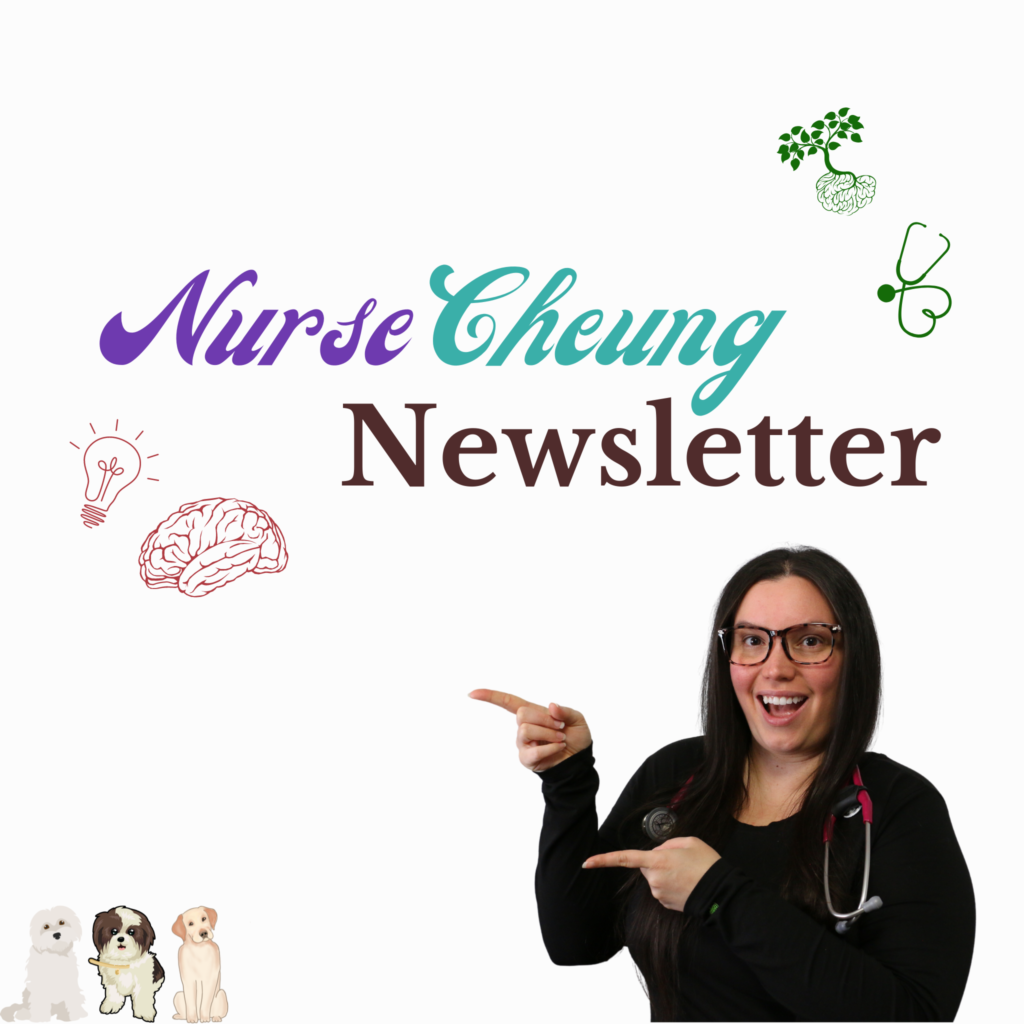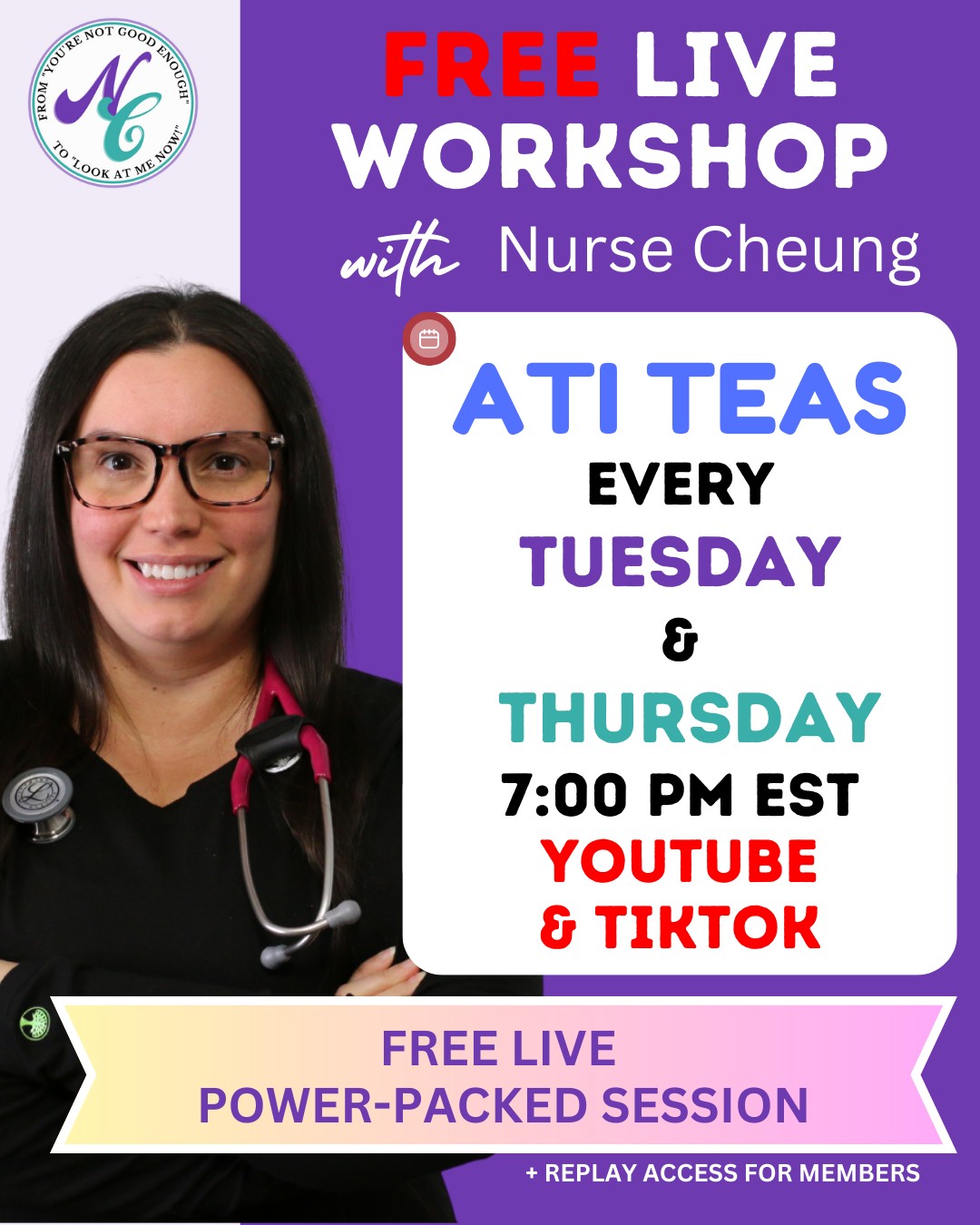If you’re studying for the ATI TEAS Reading exam, it’s important to know the key ideas and details that will be covered on the test.
This blog post will outline some of the most important information that you need to know in order to be successful on the exam.
We’ll discuss topics such as the main idea and supporting details, inference and interpretation, and literary devices. After reading this post, you should have a good understanding of what to expect on the ATI TEAS Reading exam and how to prepare for it!
Objectives for Key Ideas and Details
Total scored items on ATI TEAS: 15 questions out of 39
Summarize Multi-Paragraph Details
Identify the Topic
The topic of a paragraph can usually be found at the beginning of a passage or paragraph, usually within the introduction. In some cases, the topic may be stated explicitly, while in others it may be implied. When you’re trying to identify the topic of a paragraph, ask yourself what the paragraph is mostly about.
For example, if a paragraph is mostly about animals that live in the rainforest, the topic of the paragraph is probably “rainforest animals.” If a paragraph is mostly about the effects of global warming, the topic of the paragraph is probably “global warming.”
Examples of topics in nursing textbooks include body systems, vital signs collection, and palliative care.
Main Idea and Supporting Details
The main idea of a paragraph can be identified by finding the topic sentence, which is usually the first sentence in a paragraph. The main idea is the overall point that the author is trying to make in the paragraph (the claim, message, or thesis). All of the other sentences in the paragraph support and develop the main idea.
To find the main idea of a paragraph, ask yourself:
- What is the author talking about in this paragraph?
- What is the overall point that the author is trying to make?
- What are the supporting details in the paragraph?
For example, if the topic is vital signs collection, the main idea could be how to measure temperature or the importance of obtaining accurate blood pressures.
Supporting details can be found by looking for clues including examples, reasons, consequences, purpose, or results. These details help to explain, develop, or support the main idea.
For example, if the topic sentence is “Temperature can be measured in a number of ways,” the supporting details might explain how to measure temperature using a thermometer, how to take an oral temperature, or how to take a rectal temperature.
What’s the difference between a topic and the main idea?
The topic of this paragraph is the main idea. Example: Noise Pollution
The main idea is the overall point that the author is trying to make. Example: Ways to reduce noise pollution
The supporting details help to explain, develop, or support the main idea. Example: wear earplugs, lower the volume on technology, and shut the door when using noisy machines.
Identify Key Points
The key points in a paragraph are the most important pieces of information that the author is trying to communicate. Key points support details with evidence such as facts and descriptions.
To find the key points, ask yourself:
- What are the most important ideas in this paragraph?
- What information do I need to remember?
- What details support the main idea?
For example, if the topic sentence is “Vital signs are important indicators of a patient’s health,” the key points might be that vital signs include temperature, pulse, respiratory rate, and blood pressure; or that vital signs can help to identify changes in a patient’s condition.
What’s the difference between key points and supporting details?
Key points are the most important ideas in a paragraph while supporting details help to explain or develop those ideas.
Explain Supporting Details of the Main Idea
The supporting details in a paragraph explain, develop, or support the main idea. For the ATI TEAS, it is important to identify what supporting details support the main idea and which details in the passage are irrelevant.
Irrelevant details in a passage can include ideas that are not clearly related to the main idea, ideas that are tangential or only marginally related, or information that is interesting but ultimately not useful in understanding the main idea. If you come across a detail that doesn’t seem to fit, ask yourself whether it is truly relevant or not.
An example of an irrelevant detail in a paragraph about global warming might be a description of the weather on a particular day. This information may be interesting, but it does not help to explain or develop the main idea of the paragraph, which is the effects of global warming.
Examples of relevant supporting details about global warming might be the increase in average global temperatures, the melting of glaciers and polar ice caps, and the rise in sea levels.
Paraphrase Key Points in a Multi-Paragraph Passges
In a multi-paragraph passage, the key points will often be summarized in each paragraph with supporting details. It is important to identify what the most important key points are in relation to the topic. This is a good opportunity to practice paraphrasing, which is the ability to express the same information using different words.
For example, if the key points in a passage about the American Revolution are that it was fought to gain independence from Britain and that it resulted in the formation of the United States of America, you might paraphrase these key points as follows:
- The American Revolution was a conflict between the American colonies and Great Britain that resulted in America’s independence.
- This war led to the formation of the United States of America as a sovereign nation.
Practice paraphrasing key points in order to improve your reading comprehension and test-taking skills.
Make Inferences and Draw Conclusions
Inferences versus Conclusions
An inference is an educated guess or assumption based on evidence of a topic in the text. This can also be referred to as reading between the lines.
For example, if you read that “John didn’t come to school today because he was sick,” you can infer that John is probably at home.
A conclusion is a statement reached after considering the evidence. It takes the evidence found in the text and considers the next logical step based on the details.
For example, if you read that “John didn’t come to school today because he was sick,” you can conclude that John will probably not be at the school’s upcoming football game.
Explicit and Implicit Evidence
Explicit evidence is information that is stated directly in the text. There is no confusion regarding what the text means.
For example, if you read that “The doctor diagnosed John with the flu,” the evidence is explicit and there is no room for interpretation.
Implicit evidence is information that is implied or suggested by the text, but not stated directly. This type of evidence requires you to make an inference in order to understand what the text is trying to say.
For example, if you read that “John didn’t come to school today,” the evidence is implicit because it is not stated explicitly that John is sick.
Drawing Logical Conclusions
Once you have considered the evidence in the text, you can draw logical conclusions based on what is stated.
If you read that “John didn’t come to school today because he was sick,” you can logically conclude that John is probably at home. You can also logically conclude that John will probably not be at the school’s upcoming football game.
Demonstrate Comprehension of Written Directions
Identify Words and Phrases that Signify Order and Relationship
Procedural texts are instructions that tell you how to do something typically through a sequence of steps. They often include words and phrases like “first,” “next,” “then,” “after that,” and “finally.” These words and phrases signify the order in which you perform steps.
For example, if you read a recipe that says “first, preheat the oven,” you know that you should preheat the oven before doing anything else.
If you read a set of instructions that says “next, put the chicken in the pan,” you know that you should put the chicken in the pan after you preheat the oven.
Other words and phrases that signify order and relationship include “before,” “after,” “during,” “while,” and “since.”
These words and phrases can help you understand the order of events in a text.
Identify Priorities in a Set of Directions
Directions are often provided in list formats either through bulleted or numbered priority. When you are given a set of directions, it is important to identify the priorities by using signal words. This will help you understand what is most important to do and what can be done in any order.
For example, if you are given the following set of directions:
- first, take out the garbage
- next, do your homework
- then, take a shower
- finally, eat dinner
The priorities are “first, take out the garbage” and “next, do your homework.” These are the most important things to do and should be done in that order. The other two tasks can be done in any order.
You may also come across instructions that have no signal words to signify priority. In these cases, you will need to use your best judgment to determine what is most important.
For example, if you are given the following set of directions with no signal words:
- make your bed
- brush your teeth
- eat breakfast
In this case, you can use your best judgment to decide what the priorities are. One possible order could be “brush your teeth, eat breakfast, make your bed.”
Another possible order could be “eat breakfast, brush your teeth, make your bed.”
Remember, the goal is to demonstrate your comprehension of written directions, not to follow a set of instructions perfectly.
Identify Missing Information and Contraindications
In an ideal scenario, you will be provided a list of directions that include all performing tasks that is consistent and logical. Sometimes you are given a set of instructions that may be missing information or you may be unfamiliar with the procedure. This missing information can be implied or stated explicitly.
Sometimes directions can be contraindicatory without missing information. These directions can include signal words like either/or options.
For example, the directions may say “put either the chicken or the beef in the pan.” In this case, you would put only one or the other in the pan, not both.
If there are no signal words, you will need to use your best judgment to determine what can be done simultaneously and what needs to be done in a specific order.
For example, the directions may say “put the chicken in the pan and turn on the oven.” In this case, you would put the chicken in the pan and turn on the oven at the same time.
However, the directions may say “put the chicken in the pan and then turn on the oven.” In this case, you would put the chicken in the pan and then turn on the oven after the chicken is already in the pan.
It is important to never assume steps are optional unless the text explicitly states that a step is an option.
Locate Specific Information in a Passage
Finding Relevant Information to Solve a Problem
When you are trying to find specific information in a text, there are a few steps you can take to help you locate the information quickly and efficiently.
First, you should reread the question or problem to make sure you understand what information you are looking for. Ask yourself “What problem am I trying to solve or what decision am I attempting to make?”
Then, scan the text for keywords that are related to the information you are looking for.
Once you have found the keywords, read the sentences around those keywords to find the information you are looking for.
If you are still having trouble finding the information, try reading the passage in its entirety.
Asking Questions to Determine Missing Information
It is important to read the passage and understand what information you are needing to complete the passage. If you are still having trouble finding the information, try asking yourself some questions about what you are looking for.
For example, if you are looking for information about how long it will take to complete a task, you can ask yourself “How much time is needed?” or “What is the time frame?”
If you are looking for a specific number, you can ask yourself “How many?”
Asking questions like who, what, when, where, and how can help determine what information is missing.
Using Textual Features to Navigate Information
Textual features are the different ways an author organizes information in a text. These features can help you locate specific information quickly and efficiently. Examples include glossaries, indexes, and table of contents; headings and subheadings; and sidebars, footnotes, and legends.
Glossaries, Indexes, and Tables of Contents
In longer passages, you can identify relevant information using the glossaries, indexes, and tables of contents to help you locate specific information.
Glossaries are an alphabetical list of terms and their definitions. This resource tends to be located in the back of a book.
Table of Contents and Indexes are a list of topics and the page numbers where those topics are located. The Table of Contents is usually located in the front of a book while the index is located in the back of the book.
Headings and Subheading
Headings are the titles of each section in a passage. These are usually big and bold.
Subheadings are located within sections and can help you identify relevant information.
Headings and subheadings break up text and organize it by the main idea and topic. This feature allows you to skim through the passage and go directly to the information you need.
For example, a heading may be “The History of the American Revolution” and a subheading maybe “The Causes of the American Revolution.”
Sidebars, Footnotes, and Legends
Sidebars are boxes of text that are located to the side of the main text and are often used in history textbooks. They usually provide additional information that is related to the main text.
Underlined, boldfaced, and italicized text features can help you identify relevant information; however, can be confusing at times since these features can be used in a variety of ways. You may need to ask yourself if these features are highlighting a title, quotation, new topic, or organizing information.
Footnotes are small pieces of text located at the bottom of a page and provide more in-depth details about a topic. Footnotes typically include numbers in the superscript.
Legends are small pictures or symbols that are located next to a table or graph. These help explain what the table or graph is about and reduce clutter. Typically, you will see legends on map interpretations.
Analyze and Interpret Charts and Graphs
Locating Information in a Graph to Solve a Problem
When looking at a graph, it is important to note the title, labels on both the x and y-axis, and any other relevant information. This will help you understand what the graph is trying to show. After understanding what the graph is about, you can begin looking for specific information.
Let’s say you’re looking at a graph about the number of hours of sleep people get each night. The title of the graph is “Sleep Habits of Americans.” The x-axis is labeled “Number of Hours of Sleep” and the y-axis is labeled “Percentage of People.”
From this graph, you can determine that the average American sleeps around seven hours each night. You can also see that a majority of people sleep between six and eight hours each night.
Interpreting Graphic Representations of Ideas to Solve Problems
Identifying features and information in graphic representations can help solve problems if you are able to interpret the information. Common elements of a map include title, legend, and scale.
The title of the map will tell you what the map is representing. The legend will explain what the symbols on the map represent. The scale tells you the relationship between the distance on the map and the actual distance.
For example, a map of your town may have the title “Downtown Map of Anytown, USA.” The legend may have symbols that represent different businesses such as a restaurant, grocery store, or bank. The scale might say “One inch equals one mile.”
This information can help you solve a problem because you are able to identify where certain businesses are located and how far away they are from each other.
Diagrams are another graphic representation that carries in their design their purpose and contains titles, subheadings, summaries, descriptions, images representing ideas, content vocabulary, and steps in a process.
Biased or Misleading Information in Graphics
It is important to be aware that some information in a graphic may be biased or misleading. The creator of the graphic may have included only certain information to support their own ideas or beliefs. They may also have left out important information that does not support their views.
It is important to be critical of the information you see in a graphic and to look for other sources that confirm or deny the information.
For example, let’s say you see a graph that shows the number of people who support gun control in the United States. The graph only shows data from one source and does not include data from other sources.
Using Graphics to Strengthen Arguments
Graphics can be used to support arguments by providing visual evidence. For example, if you are writing a paper about the number of people who support gun control in the United States, you could include a graph that shows the data.
Including a graphic in your argument can make it more persuasive because it provides visual evidence to support your claim.
Using this tool can provide your audience with a sense of logic, emotion, and/or morality in the graphic.
Interpret Events in a Sequence
Identify and Evaluating Phrases that Indicate a Sequence of Events
When you are trying to understand a sequence of events, it can be helpful to look for phrases that indicate the order of the events. These phrases are called “signal phrases.”
Signal phrases can be found in both written and spoken language. For example, the signal phrase “first,” indicates that the event you are about to hear or read about happened before any other events.
Other signal phrases include “second,” “next,” “then,” and “finally.”
It is important to be able to identify signal phrases so that you can understand the sequence of events.
Identify Language that provides Cohesion in Ordering Events
In addition to signal phrases, there is also language that can provide cohesion in ordering events. This type of language includes words and phrases such as “in addition,” “moreover,” “furthermore,” and “however.”
This type of language can help you connect the events in a sequence. For example, if you hear the signal phrase “first” followed by the cohesive phrase “in addition,” you know that the event you are about to hear about happened at the same time as the first event.
Cohesion adverbs can include when, how often, and length of time.
- When cohesion words can include “today,” “tomorrow,” “now,” and “last month”
- How Often cohesion words can include “always,” “occasionally,” and “seldom”
- Length of Time cohesion words can include “all month,” “all season,” and “all week”
Drawing Conclusions Based on a Series of Events
Once you have identified the signal and cohesion phrases, you can start to draw conclusions about the events in the sequence.
For example, if you hear the signal phrase “first” followed by the cohesive phrase “in addition,” you know that the event you are about to hear about happened at the same time as the first event.
You can also use the signal and cohesion phrases to make predictions about future events. For example, if you hear the signal phrase “next” followed by the cohesive phrase ” moreover,” you can predict that the event you are about to hear about will happen after the event that was just mentioned.
Signal and cohesion phrases can also be used to compare and contrast events. For example, if you hear the signal phrase “however,” you know that the event you are about to hear about is different from the event that was just mentioned.
Identifying Gaps in a Sequence of Events
There may be times when you come across a sequence of events that has a gap. A gap is an event that is missing from the sequence.
For example, if you are reading a story and the protagonist goes to bed, but there is no mention of what happens when he wakes up, there is a gap in the sequence of events.
In order to fill in the gaps, you can use your knowledge of the world and your own experiences.
For example, if you know that people generally wake up in the morning and brush their teeth, you can assume that this is what happened in the story.
You can also use your prior knowledge to make predictions about future events.
For example, if you know that people generally eat breakfast after they wake up, you can predict that this is what will happen in the story.
If you come across a sequence of events that has a gap, you can use your knowledge of the world and your own experiences to fill in the missing information.


